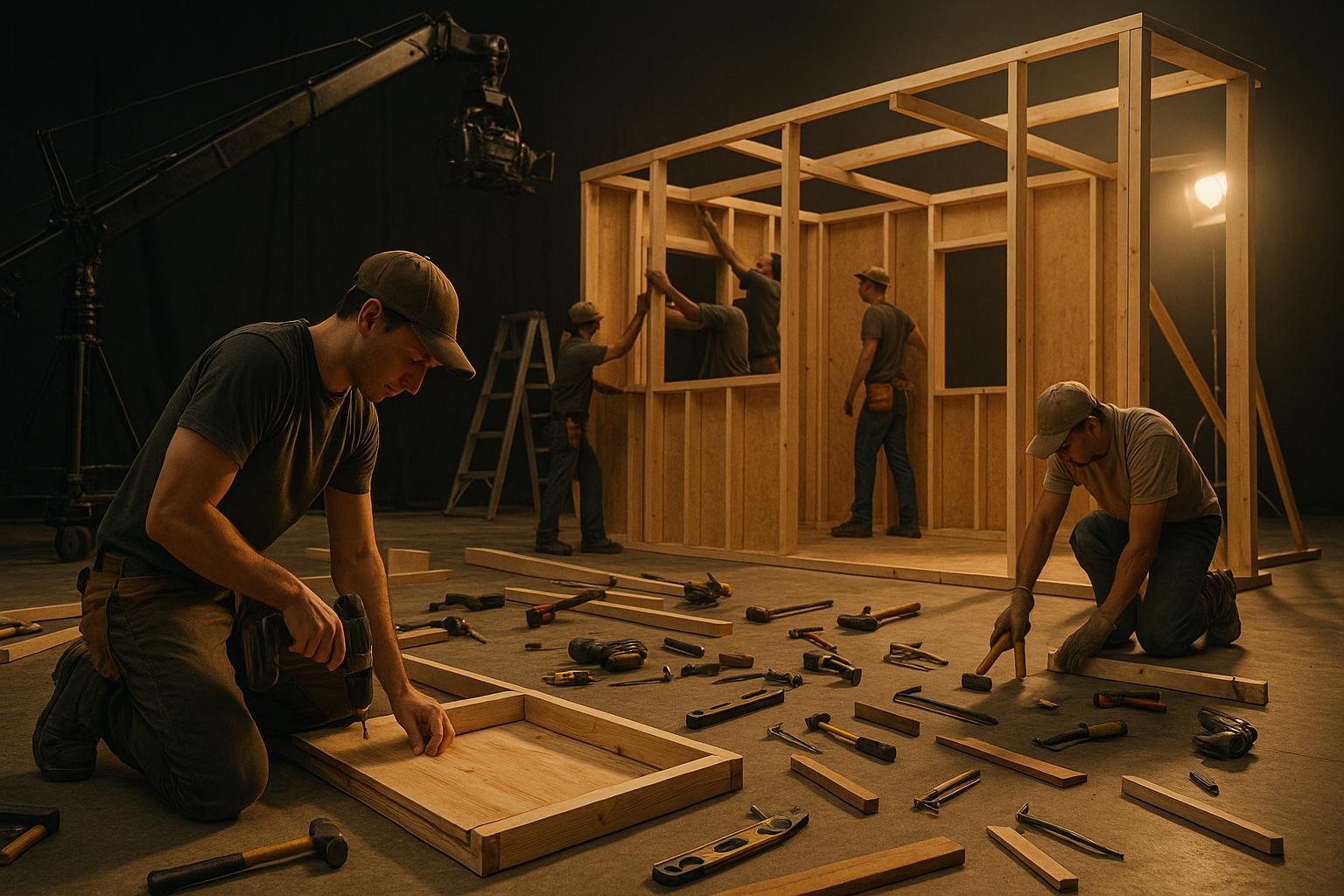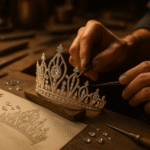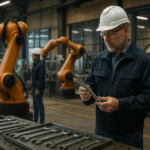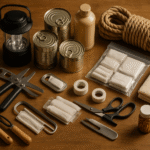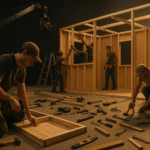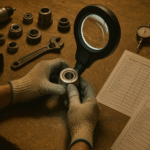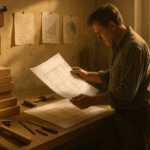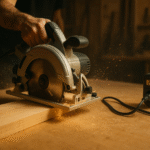Before the cameras roll, before the actors rehearse, and long before the first shot is captured, another kind of artistry unfolds quietly on every film set — a form of creation rooted not in performance, but in precision. In the weeks leading up to production, builders, carpenters, electricians, and designers turn empty sound stages into entire worlds. From futuristic cities to forgotten villages, their craft shapes the very spaces where stories come to life.
Set building is an intricate dance between creativity and construction. Every wall, staircase, and prop must be both believable on camera and functional behind the scenes. The process begins with detailed drawings from the art department, often translated into 3D models that account for lighting angles, camera movement, and even actor choreography. Once approved, the real work begins — and it’s a race against time. Crews of builders arrive armed with circular saws, pneumatic nailers, laser levels, and cordless drills, transforming sketches into tangible spaces one board at a time.
Unlike typical construction, film sets are built for illusion. A room might look like a stone cottage from the front but hide a maze of scaffolding and cables just out of frame. Every decision — the grain of the wood, the height of a doorframe, the thickness of a wall — must serve both the story and the camera. Builders work closely with cinematographers to ensure walls can be removed mid-scene, ceilings can support lighting rigs, and windows align perfectly with lens lines. It’s a kind of tool-driven choreography where art and engineering meet in the shadows.
Modern technology has completely transformed how sets are built. Designers use CAD software and CNC machines to fabricate custom pieces with millimeter accuracy, allowing complex designs to move from screen to saw in hours. The same level of precision seen in advanced workshops is now standard in major studios. Builders rely on laser measurement tools and smart devices to reduce waste and cut time without sacrificing detail. These are the same innovations changing everyday craftsmanship — the shift from raw manual labor to intelligent, data-informed construction, where accuracy is no longer a luxury but a given.
Safety and logistics are a constant concern. Large productions use safety standards similar to those enforced by the Occupational Safety and Health Administration to ensure structural integrity and worker protection. Heavy lighting trusses, scaffolding, and movable set pieces are tested repeatedly for load stability. Collaboration between departments is critical — a single misstep can delay filming or compromise safety. Builders have to anticipate the unpredictable, whether it’s pyrotechnic heat, camera dolly movement, or unexpected rewrites that require last-minute alterations to entire environments.
The artistry behind these builds often goes unseen, yet it defines the visual language of a film. Think of the rain-soaked alleys in Blade Runner 2049 or the handcrafted interiors of The Grand Budapest Hotel — every detail is the result of meticulous craftsmanship. Set builders study aging, texture, and materials, making new structures look centuries old or alien and untouched. They use everything from airbrushes and grinders to digital sculpting tools, blending industrial expertise with artistic expression.
This mindset — treating every tool as an extension of imagination — mirrors the evolution of modern craftsmanship outside film. In workshops everywhere, makers and builders combine creativity with technique, from precision sharpening to advanced tool integration. Knowing how to maintain, calibrate, and use each instrument properly isn’t just practical; it’s part of storytelling. It’s what turns a pile of lumber and metal into something that moves an audience.
When filming wraps, most sets are dismantled, recycled, or repurposed for new productions. Sustainability has become a major focus across the entertainment industry, with organizations like BAFTA’s Albert Initiative leading the charge toward greener production practices. Reusable modular structures, low-waste fabrication, and responsibly sourced materials are now considered essential rather than optional. Many builders see this not as a restriction but as a challenge — a way to innovate within limits and extend the life of their work.
Behind every film, there’s a world that never makes it into the credits — one built through precision, patience, and the timeless language of tools. For those who shape these sets, craftsmanship isn’t about fame; it’s about creating spaces that make stories feel real. The lights fade, the cameras move on, but the craft remains — unseen yet unforgettable, just like the worlds it builds.
